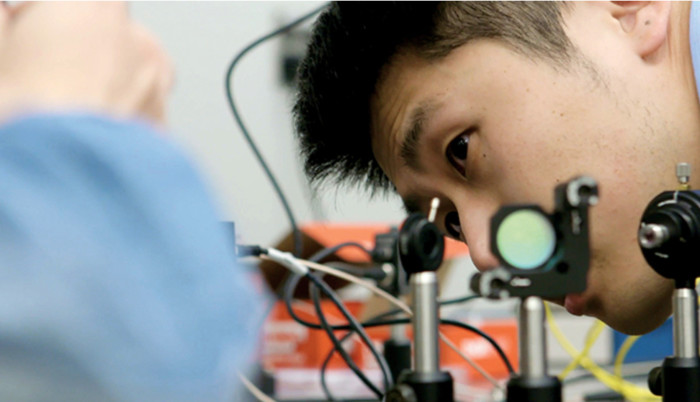In late 2019, Google, in partnership with NASA, said that its quantum computer performed in 200 seconds a computation that would take the world’s fastest supercomputer thousands of years. Even so, quantum computers need quantum networks to communicate, and today’s internet doesn’t cut it.
In hot pursuit of a quantum internet is the University of Arizona in Tucson, which the National Science Foundation selected last summer to receive a five-year, $26 million grant to establish the Center for Quantum Networks. CQN’s director and principal investigator, Saikat Guha, a professor in the university’s College of Optical Sciences, will lead a team that brings together leading researchers from Howard University, the University of Massachusetts Amherst, the University of Oregon, Northern Arizona University, the University of Chicago and Brigham Young University.
Will The Quantum Internet Replace Our Current One?
One of the CQN projects will involve building a test bed in Tucson — a quantum network spanning six buildings and 10 laboratory sites on campus. On the East Coast, CQN’s partner universities, including Harvard and the Massachusetts Institute of Technology, will build a Boston-area test bed to explore “quantum communications in a conceptually simple network setting over metropolitan-scale distances,” Guha says.
Whenever it arrives, the quantum internet will not replace the classical internet. Instead, users will see “an upgrade with a new service: that of quantum communication. The quantum internet would initially be used for research and targeted applications by government, academia and industry users, including national defense, banking and finance, the cloud computing industry, and pharmaceutical research and development, Guha explains. A biomedical researcher could use the quantum internet to simulate a new synthetic molecule. Eventually, a student could open a quantum cloud computing app on a handheld device to perform computations.
“The biggest impact on academia that I foresee is creating a transdisciplinary bridge and collaboration among researchers in disciplines that would not have otherwise worked together,” Guha says.
Quantum internet research could spawn a new generation of IT innovation. Source: University of Arizona
The Future of Quantum Exploration — A Global Effort
Other teams across the globe are similarly exploring quantum networking. The European Quantum Internet Alliance, formed in 2018 from 12 universities in eight countries, announced a major development from the Sorbonne University team in October in achieving the scalability of a quantum internet. And in the U.S., the collaboration between Stony Brook University in New York and Brookhaven National Laboratory recently demonstrated that quantum bits (qubits) from two distant quantum computers can be entangled in a third location.
“There will be new apps that use this new service for things we do not know today,” Guha says. “The quantum internet, when available to the average home, will spawn a whole new generation of IT innovators and app developers who will come up with new ways the powerful new service of quantum communication can be used.”












